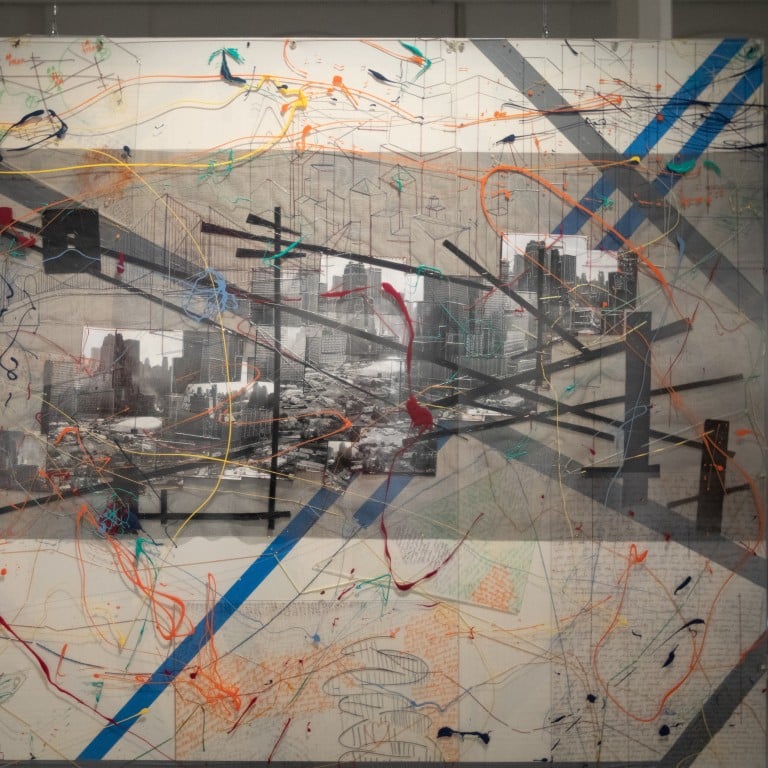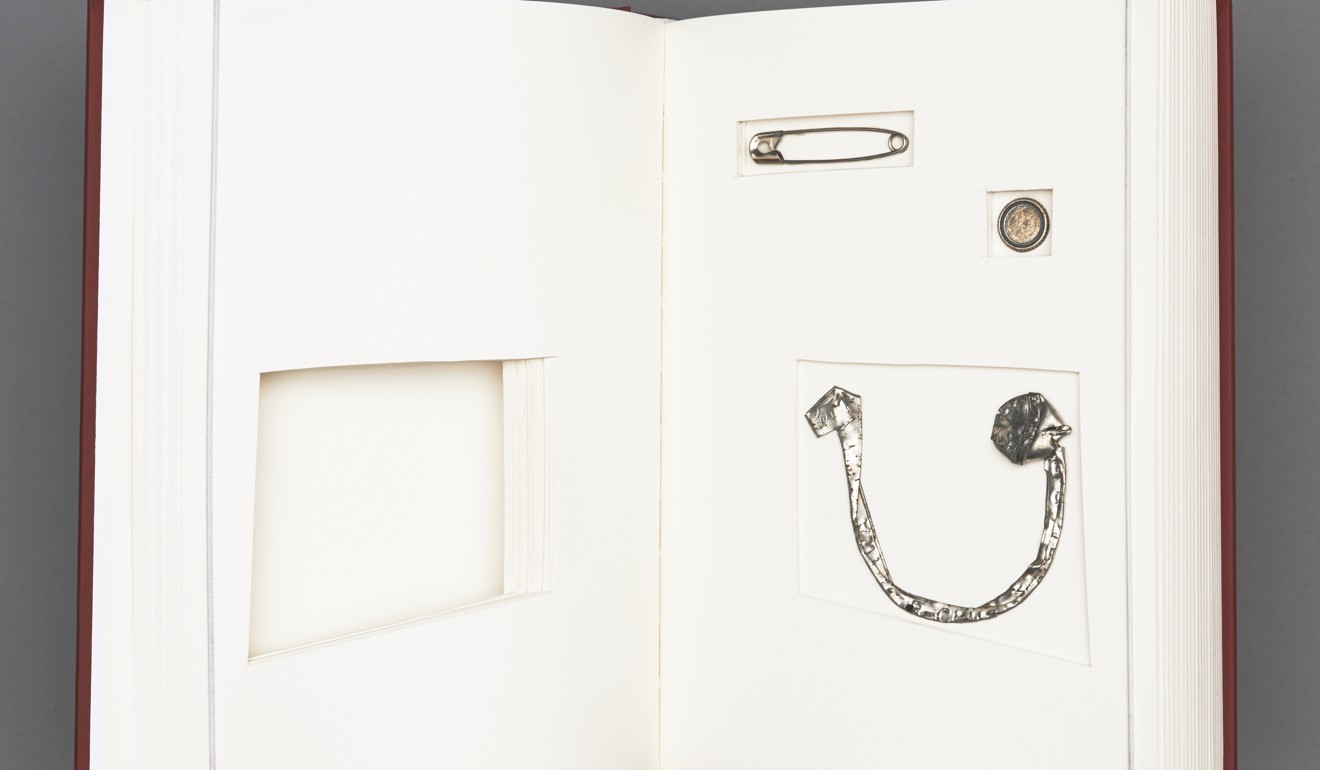
Kill Bill and Charlie’s Angels star Lucy Liu on her deeply personal art and why she ‘came out’ as an artist
- Liu, who is exhibiting in Singapore for the first time, has long been interested in art and had her first solo show, under her Chinese name, in 1993
- Works on display include a set of books with cut-outs holding found items she picked off the streets
Lucy Liu is a bag lady. A ziplock bag lady, that is.
It is hard to imagine, but the popular Hollywood actress, who is known for her roles in the movies Charlie’s Angels (2000) and Kill Bill (2003) as well as the popular US TV series Elementary, has a habit of picking up discarded items off the streets. Think empty Tic Tac (a mint-flavoured confectionery) boxes, broken bits of jewellery and even rock fragments.
Why K-pop stars Big Bang are diving into the art world
“It has gotten to a point when I’m filming, people will hand me stuff in a ziplock bag,” says Liu with a laugh. “I’ve been criticised for picking things off the streets – without gloves – and putting them in my handbag, but I find it abhorrent to pollute and waste.”
Since 2012, she has been placing this salvaged detritus in handmade, books bound with Italian fabric (also rescued from a factory where they were meant to be disposed) by cutting out spaces within the pages. She says: “The idea is to find a home for things that have been discarded. Once they were placed in the books, they seem to have found a place. They become quite pristine, almost framed.”

This installation series, titled Lost and Found, features close to 200 books, each of which is categorised according to the location where she found them. It is on display as part of her art exhibition, “Unhomed Belongings”, in Singapore.
The show, which is jointly presented by the National Museum of Singapore and The Ryan Foundation, a non-profit arts organisation, showcases Liu’s work together with Singapore artist Shubigi Rao. The 15 artworks reveal overlaps in both artists’ perspective and subject matter, despite their vastly different backgrounds, and offer meditations on themes of identity, loss and self-discovery.
While most people know Liu, 50, as an actress and film director, she was an artist long before she became famous.
Her interest in art began at the age of 15, when she started experimenting with collage as a student in New York. She held her first solo show in New York in 1993 and has since held various exhibitions around the world, including Germany, the UK and Canada.

Liu’s first exhibition in Singapore came about when she and Ryan Su, founder of The Ryan Foundation, struck up a friendship over a sushi dinner in New York. He visited her studio, where he recalls being very impressed by her work.
“I thought, this person is very determined, you feel the intensity and craftsmanship of her work,” says Su.
“By putting Lucy, a big celebrity, out there, we hope to grow the metaphorical pie, to attract more people out to see art. This may be their first exposure to art but at least they can decide if they like it or not.”

The actress agrees, partly because, as a Unicef ambassador and the mother of a three-year-old son, spreading awareness of art is something that is close to her heart.
“Visual art has always been an important part of my life,” says Liu. “My work is personal in nature – inspired by my memories and experiences, by shifting notions of security and salvation, and how these experiences and ideas manifest themselves physically in the body.”
Deeply personal works that Liu contributed include Velocity, a complex two-sided canvas created in response to the terrorist attacks in the US on September 11, 2011. It features photographs she took of the World Trade Centre site, collaged and embroidered to create a fictional cityscape, handwritten text expressing the emotions she felt and layered pieces of fabric and string to express the sense of loss she felt during the tragedy, she says during a private media preview of the exhibition.
My work is personal in nature – inspired by my memories and experiences, by shifting notions of security and salvation
There’s also Family Portrait, a painting of a faceless family that she created based on old family photographs she discovered while caring for her ailing father in 2016. While she subsequently painted over most of the images in this series, she left this one untouched. She said: “I painted that before my father passed away and I have positive feelings associated with that time so I decided not to paint over it.”
She admits that it can be scary to share such raw emotions with the world.
“When I act, I play a character. But when I show my work, it is terrifying because it is so intimate,” she says.
This is why she used to present her work using her Chinese name, Yu Ling. It was only a few years ago, when she published a silk-screened book based on her ink-on-paper work 72, that she decided to “tear off the Band Aid” and come out as an artist by using the name the world knows her by, Lucy Liu.

It was a moment of self-discovery for Liu. “It was incredibly liberating,” she says. “It gave me a sense of truth in my art and how it was viewed. There’s nothing else to hide behind. That gave me a strength to be who I wanted to be.”
Unhomed Belongings runs from 12 January to 24 February at the National Museum of Singapore. Admission is free.

